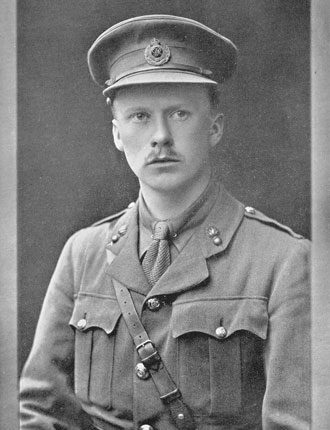November
Behind every name a story: Remembering Newcastle University's forgotten heroes

The stories behind the names on a Newcastle University First World War memorial are being brought to life in a special project.
Students, staff and schoolchildren are researching the 223 names on the Armstrong Building plaque to find out more about the men who gave their lives in the Great War as part of the Armstrong World War I Digital Memory Book. Their efforts have uncovered stories of heroism, tragedy and revealed relatives of royalty.
The project was the idea of Dr Jane Webster, head of archaeology at Newcastle University. It initially started life as a student dissertation before Dr Webster expanded it. “Most people don’t even look at the plaque when they walk past it in the Armstrong Building,” she said. “It has just become part of the furniture. This seemed a real shame to me and that’s where the idea for the digital memory book came from.
“Most of the men named on the plaque came from within 30 miles of Newcastle and the stories we’re uncovering also tell the story of the area at that time.”
Students Ben Howson and Holly Johnson helped to research around 200 names using the University archives and online sources such as the Commonwealth War Graves Commission website. “It felt like an honour really,” said Ben. “The way we were able to learn about the staff and students who came before us and made that sacrifice. Armstrong College was quite small at the time so for 223 men to die in the war would have had a huge impact.”
The story which stands out for Ben is that of Wallace Moir Annand, who studied maths, physics, chemistry and engineering. He died on 4 June 1915, aged 27, while serving in the Navy at Gallipoli. He died before he could meet his infant son, Richard, who would become the first person to be awarded the Victoria Cross in World War II.
Another story the project has uncovered is that of Henry Cliff Stroud (pictured), son of Armstrong College physics professor Henry Stroud. He studied for a degree in engineering at Armstrong College and went to fight in France in January 1915 with the 1st Field Company Northumbrian Royal Engineers. He was wounded in both legs shortly afterwards and returned to Armstrong College, by then operating as a hospital for war wounded to recuperate.
He recovered and eager to play a more active part in the war, he joined the Royal Flying Corps in 1916. Henry went on to play a part in repelling almost every German air raid on London. There was no moon the night of the Germans’ penultimate attack and Henry collided with another aircraft piloted by Captain Alexander Bruce Kynoch while trying to intercept a raider heading for the capital. He was just 24-years-old when he died on 17 March 1918 and he is remembered with an inscription on a propeller where his plane came down at Dollymans Farm, in Essex.
Also featured is William Lawson, from Boldon Colliery, who gained a BSc at Armstrong College. He was the brother of Jack Lawson, MP for Chester-le-Street, who would become the first Baron of Beamish. William described the war as a ‘permanent industry for making death’ in a letter home and was killed in action on 27 March while serving with the Durham Light Infantry.
Newcastle University archivist Ian Johnson said:
“We have uncovered some fascinating stories which really bring the people behind the names to life, but there is still more research to be done. Anyone who thinks they may have a relative featured on the memorial or is just interested in local history or the First World War, can go online to see the memory book and they can take up the search.
“For example, one of the names on the memorial is that of Gavin Patrick Bowes-Lyon, who was the Queen Mother’s cousin. We haven’t been able to find out very much about him and we’d be very grateful if someone who knows anything about him would come forward and help us fill in the gaps.”
As part of the project, staff at the University’s Robinson Library have been developing materials so schoolchildren can learn how to research the names themselves and contribute to the digital memory book or go on to research names from their area.
The Armstrong WWI Memorial Digital Memory Book is located at the entrance to the Armstrong Building on Newcastle University campus. Alternatively, visit the website to see the entries.
published on: 4 November 2014
